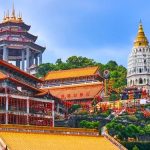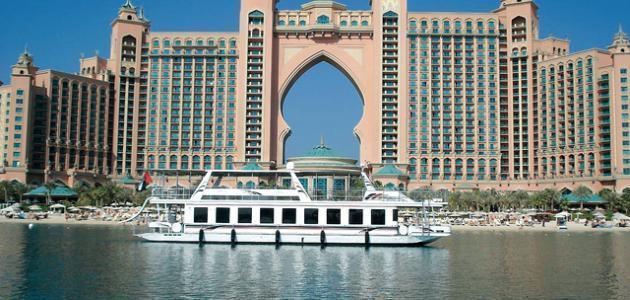Contents
UAE
The United Arab Emirates is a tourist country. It is geographically located on the eastern side of the Arabian Peninsula, overlooking the Arabian Gulf. The Emirates consists of seven emirates: the Emirate of Ajman, the Emirate of Abu Dhabi, the Emirate of Fujairah, the Emirate of Dubai, the Emirate of Umm al-Quwain, and the Emirate of Sharjah. and the Emirate of Ras al-Khaimah.
Tourism in Emirates
Touristical Monuments
- Landmarks of the Emirate of Ajman: Ajman Museum.
- Landmarks of the Emirate of Abu Dhabi: Al Maqtaa Fort, Sheikh Zayed bin Sultan Al Nahyan Mosque, Heritage Village, Emirates Palace, and Ferrari World.
- The properties of the Emirate of Umm al-Quwain are: Dreamland and Al-Siniyah Island.
- Landmarks of the Emirate of Dubai: Burj Al Arab, which opened in 1999, Dubai Waterfront, which is Dubai Marina, Palm Jumeirah, Burj Khalifa, which opened in 2010, and Dubai Metro.
- Landmarks of the Emirate of Ras Al Khaimah: the ruins of Julfar city and its valley, Daya fort, Al Zuba Palace, and guard towers.
- Landmarks of the Emirate of Sharjah: Eye of the Emirates Wheel, Al Qasba Canal, Sharjah Aquarium, and Animal Center of the Arabian Peninsula.
- Landmarks of the Emirate of Fujairah: Masafi Falls, Wadi Siji, which is one of the most beautiful valleys in the Emirates, and Wadi Wurayah.
Tourism for festivals and events
Many festivals and events are held in the Emirates, including:
- Abu Dhabi Classical Music Festival.
- Sharjah Water Festival.
- Fujairah Shopping Festival.
- Womad Festival.
- Dubai Shopping Festival.
- Umm al-Quwain Marketing Festival.
- Dubai Summer Surprises.
- Ras Al Khaimah Festival for purebred Arabian camels.
- Ajman Shopping Festival.
Archeology Tourism
- The ancient island of Umm al-Nar, which contains more than fifty tombs of circular shapes, and some pottery and copper tools.
- Al Qattara agricultural area, which has two rectangular buildings containing golden statues, pottery, stone, copper and bone vessels.
- Hili archaeological area located on the northern side of Al Ain city, which has seven tombs in round shapes, and watchtowers.
- Bida Bint Saud area.
- Jebel Hafeet archaeological site.
- Al-Drehana archaeological site, which dates back to the Islamic era.
- Al Jahili Fort, which is considered one of the largest impregnable forts.
- The cemetery of the armies, which dates back to the era of early Islam.
- Al Muraijib fortress, which was built in the year 1820.
- Masfout carvings that date back to the sixth or third millennium BC.
- Mleiha farm belonging to the Sudair clan.
- Al Qusais Archaeological Area, located in the Emirate of Dubai, which dates back to the end of the second millennium BC.
- Manama graves.
- Pay area.
- The Mleiha area that owns the round Islamic tombs.
- Jabal Al Faya, which dates back to the Paleolithic era.
- The tombs of Bahas, which owns the oldest Islamic mosques in the Emirates.




